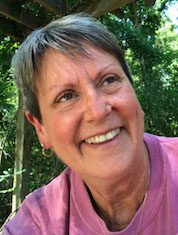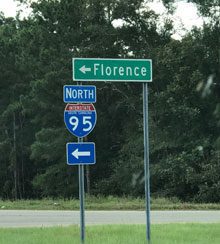 I remember sitting in a Queen Anne chair, having a cup of Nescafé coffee, and looking out of my hotel window in Luxembourg City. From the sixth floor of the Grand Hotel Cravat, looking down on Constitution Square, the view is in direct alignment with the Monument of Remembrance, a war memorial to the citizens of Luxembourg who volunteered to fight in both World Wars and Korea.
I remember sitting in a Queen Anne chair, having a cup of Nescafé coffee, and looking out of my hotel window in Luxembourg City. From the sixth floor of the Grand Hotel Cravat, looking down on Constitution Square, the view is in direct alignment with the Monument of Remembrance, a war memorial to the citizens of Luxembourg who volunteered to fight in both World Wars and Korea.
On top of the granite obelisk is the Gelle Fra – the Golden Lady. She holds a laurel wreath, a symbol of triumph, in a gesture meant to symbolize the placement of the wreath on the head of the Luxembourg nation. At the base of the obelisk is a bronze fallen soldier, and another sitting beside him, mourning. Two Luxembourg flags with three horizontal stripes of red, white and blue, mark the entrance to the monument.
The moment was a bit surreal – another country, another monument to those who died in shared wars. A cool breeze entered the window I’d propped open to hear the sounds of the city and enjoy the fresh air. I was alone. I watched Asian tourists disembark from a bus parked close to the monument. From the hotel height, they seemed like a small colony of ants, snapping pictures and taking selfies in a frenzy of poses lasting only an instant.
Now, back home in South Carolina, the world of sixth floor windows and the charm of old town Luxembourg vanish. Too quickly, real life fills the vacuum of time zones maneuvered between two continents. A friend shares her plans for a celebration of life for her deceased husband who died a little less than three months ago. A neighbor, also widowed, tends to his loving dog, his best friend, who has lost the use of a leg because of cancer and it is only a matter of time when he will have to let go of his pal. Another friend is newly diagnosed with breast cancer. And yet another needs a hip replacement. It was the world I left behind when I went to Europe, and it is still here.
There is a story, one of my most favorite, that is written with the First and Second World Wars as a backdrop. It is titled, “The Man Who Planted Trees.” As I was writing about Luxembourg, and my friends and neighbors, I decided to Google the story. To my great satisfaction, an animated movie of the story created in 1987 was on YouTube. It is thirty minutes long. I watched it because I knew it was a story of hope whose roots begin in despair and desolation. As I’d anticipated, the story reminded me of the opportunity available to every person to positively impact her world even in the bleakest of circumstances.
While I visited the small country of Luxembourg, snugly tucked inside the boundaries of Germany, Belgium and France, citizens lined up outside the Grand Ducal, the royal palace of Luxembourg, to pay their respects to the Grand Duke Jean who’d passed away on April 23. I joined the line. I’m not sure why. It was a strange decision. I’ve never lined up to pay respects to any American dignitary. Maybe it was the chance to enter a palace and be a part of history. Certainly, there was some modicum of pure curiosity and voyeurism. Whatever it was, it prompted me to want to learn more about Jean and the country’s history, landing me in the Museum of Déportation the next day.
I thought I would be learning about the atrocities on Luxembourg Jews during WWII and I did. However, the real focus of the museum was on the deportation of Luxembourg families sent to camps in Germany to work on farms and in factories as punishment for sons who had deserted forced service in the German Army to fight Russia. In that tiny museum, housed at the station where families unwillingly boarded train cars, I learned about the Grand Duke and his mother Charlotte, about a tiny country’s strength, and the man I had viewed and prayed over the previous day.
What is all of this blather about? Dead dukes, golden statues, deported families, a return home, and a fictional story of a man who plants a forest. Simply, it is nothing more than a reflection on the never-changing condition of life and its ever-changing view, the open window, and my response to life. Knowledge and understanding of the past and present provides the luxury of choices that will impact the direction of the future. Do we ever really know the people that enter and leave our lives over time? Some – our parents, our family, the closest of friends. Otherwise, people move in and out of our lives, occupying our time and energy in short or long bursts, providing us lessons and morals to stories we might never have known.
The past rests in memory. Sometimes it is honored in static statues of gods, symbols, or replicas of saints – imagination taking shape in stone, or on canvas and paper, our interpretation of life’s lessons. What is real is the next ride we provide to a person undergoing out-patient surgery, the small vase of flowers we deliver because we don’t have the right words to offer, or the biscuit we give to a dying pet. There is so much heaviness needing to be lifted up around us, and most of us are capable to do some of the lifting, a simple smile for someone who does not speak your language, or the planting of a single acorn(watch the YouTube video). And it matters that each of us takes time to sit quietly and look out of the window and into ourselves. Our inner peace is a gift we may share with others free of charge, but it does deplete.
I’ll remember Luxembourg, looking out at an old city whose skyline is crisscrossed with construction cranes as banks and high rises build on the periphery of Roman fortresses and old churches. And I’ll remember the hands of young men reaching to help a woman struggling to climb stairs leading to the casket of a man over whose body she will sprinkle blessed water. That living example of kindness is worthy of any golden laurel wreath.







